Modules Development via Docker¶
The primary objective is to simplify the setup process for developing Virto Commerce (VC) modules by using Docker technology. This initiative aims to speed up the onboarding process for new engineers joining our team. With Docker and Visual Studio installed, developers can focus on coding without having to worry about configuring external tools or services such as the VC platform, SQL Server, Elastic Search or Redis. Development takes place in Visual Studio as usual, with changes seamlessly synchronised between the host and the Docker container.
![]() Deploying Modules from Source Code
Deploying Modules from Source Code
Description¶
The Virto Commerce team has developed a docker-compose.yml file to facilitate the execution of the VC Platform 2Manager web app inside Docker containers.
The VC Platform Manager web app has been containerized into multiple services, including the web service (Platform Manager) and external services for MS SQL Server, Elastic Search, and Redis. These services are orchestrated as a multi-container application using Docker Compose.
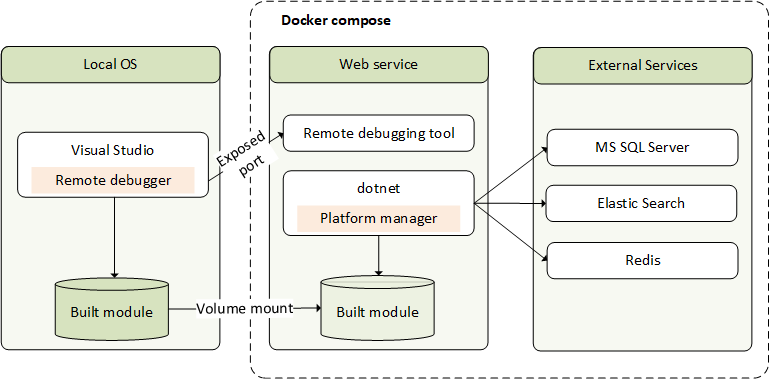
Note
The solution does not include the Storefront and Theme components.
The web service container is based on the virtocommerce/platform latest Linux image.
Developers write and build code for new modules in Visual Studio on their host machines. To ensure that any code edits made on the host machine are automatically reflected in the container, the ./Modules and ./App_Data/Modules folders on the host machine are mapped to the /opt/virtocommerce/platform/Modules and /opt/virtocommerce/platform/App_Data/Modules folders in the container, respectively.
This synchronization is achieved through bind mounting, where the contents of the host directory overwrite those in the container directory, creating an exact snapshot of the host directory in the container. This approach enhances the development experience, making it more intuitive and seamless. Volume mapping in the docker-compose file facilitates this synchronization.
For convenience in configuring the Docker and Docker Compose files, all customizable parameters are stored in a separate .env file. This file allows users to set values for various parameters, including:
- PLATFORM_VERSION: Tag for the required virtocommerce/platform image (default value
dev-linux-latest). - MODULES_VOLUME: Path to the
./Modulesfolder on the host machine. - APP_DATA_MODULES: Path to the
./App_Data/Modulesfolder on the host machine. - DB_PASS: SQL Server service password.
- REDIS_PASS: Redis service password (default value
passwd@123). - SEARCH_PROVIDER: Search provider used in VC Platform (default value ElasticSearch).
Prerequisites¶
- Basic understanding of Docker and Docker Compose, along with key terms used in the ecosystem.
- Docker Desktop for Windows installed on your machine.
- GitHub personal access token created.
- Authentication to GitHub Packages.
Install Docker for Windows¶
- Review What to know before you install.
- Install Docker Desktop for Windows on your machine.
- During installation, select Linux as the operating system used inside your containers and install updates for WSL 2 (Windows Subsystem for Linux).
Use¶
- Copy the ModulesDevelop folder to your local machine.
-
Create an external network for the Docker engine by running the following command in PowerShell with elevated administrator privileges:
-
Parameterize values in the .env file.
You can also parameterize the platform version and search provider in the .env file:
-
Build and launch
docker-composeby running: -
Run Virto Commerce Platform Manager at http://localhost:8090/ and configure modules as required.
- Create a new module as described in the article.
- Write code for the new module.
- Build the new module.
- Copy the built module to the
Modulesfolder. - Debug the new module.
Run Virto Commerce Platform Manager¶
After the containers are started, open VC Platform Manager. This will launch the application and install default modules. After the modules have been installed, restart the container with the platform to configure sample data.
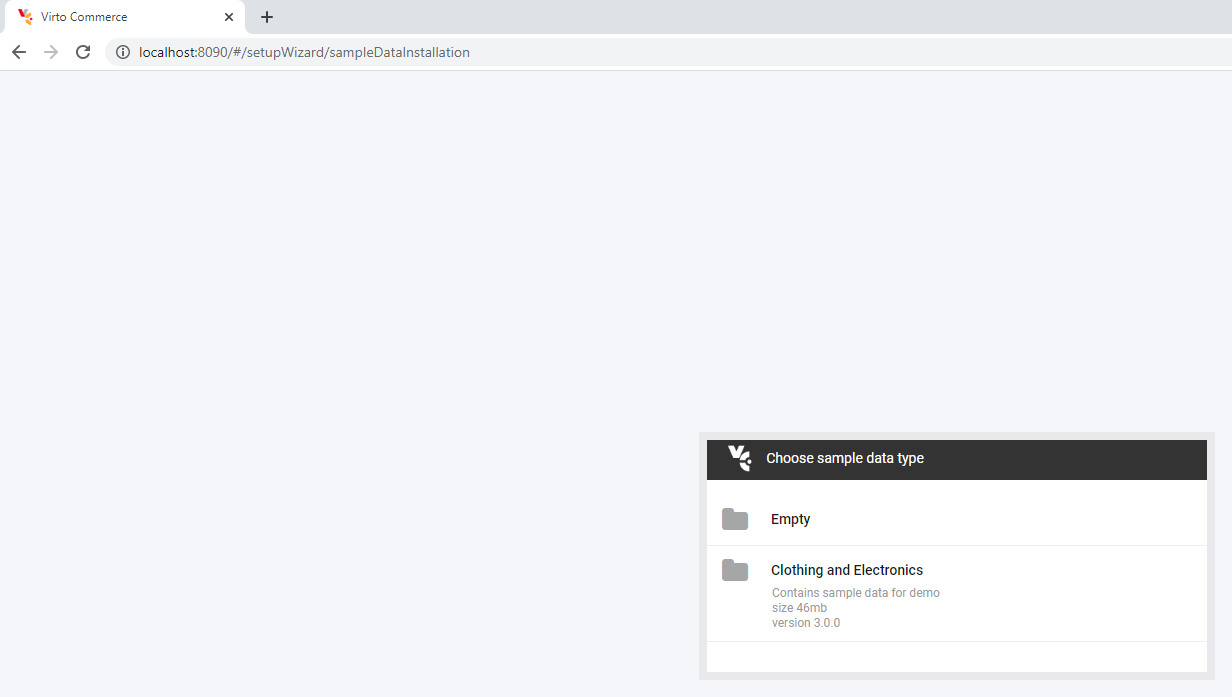
Copy Built Module to Modules Folder¶
- Navigate to the
Modulesfolder on the local host. - Create a folder for the newly created module.
- Copy the
your_module_project.Webfolder to the created folder.
Debug Module¶
- Build the solution locally (press F6 in Visual Studio).
-
Within Visual Studio, select the Attach to Process action in the Debug window:
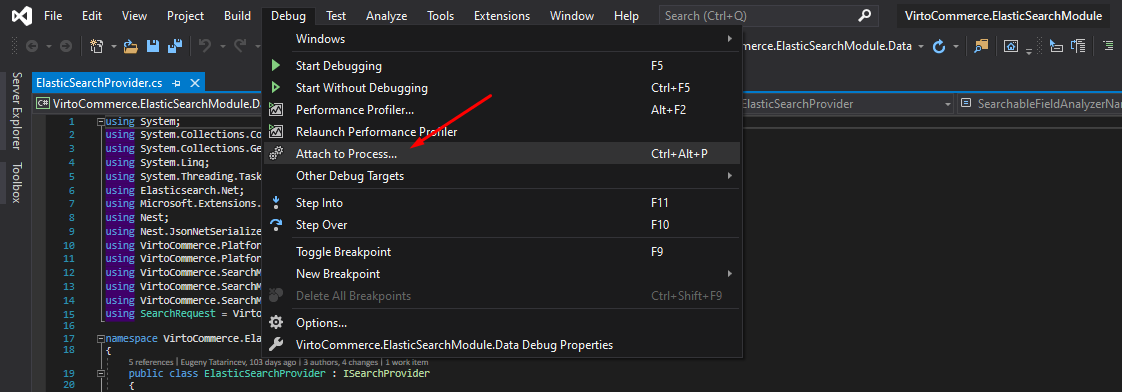
-
Choose Connection type Docker (Linux Container) (1).
- Press the Find button to locate the remote connection (2).
- Select the virtocommerce.platform.web container (3).
-
Press Ok (4).
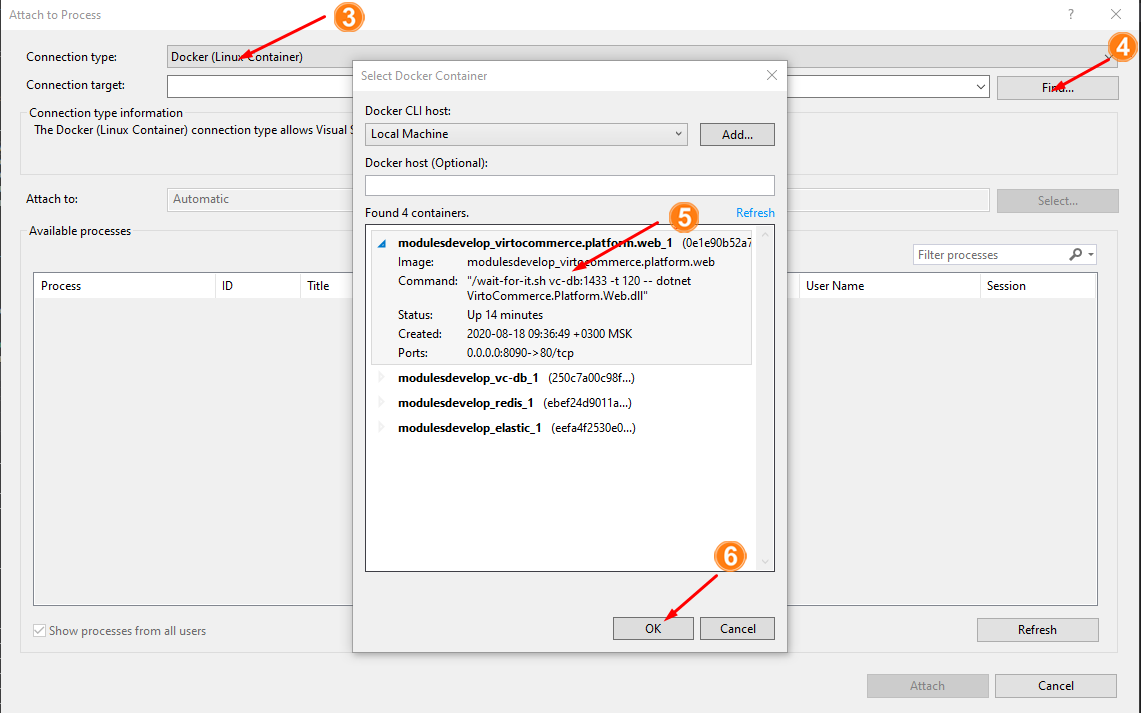
-
Once the container is selected, attach the running process. For debugging a .NET Core application, select the
dotnetprocess: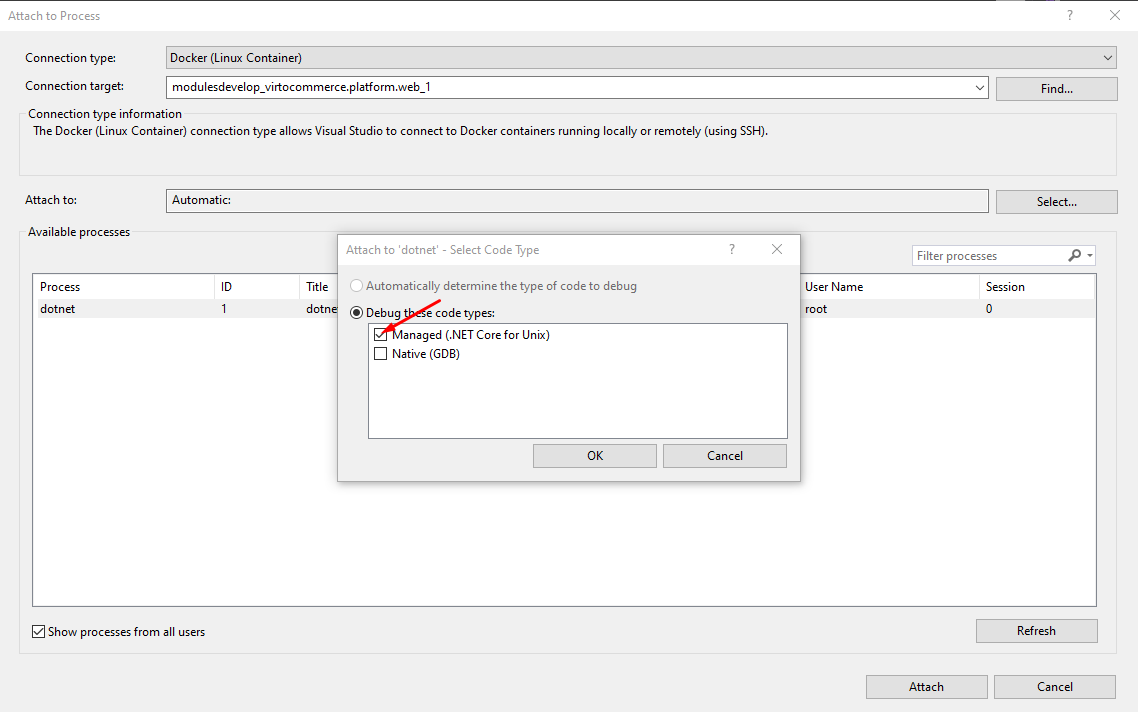
If the new module has been rebuilt:
- Overwrite the folder for the newly created module with
your_module_project.Web. -
Restart the platform by clicking Settings -> Restart on Platform Manager UI:

Clean Up Environment after Debugging¶
When the debugging process is complete, stop docker-compose by running:
Don't forget to delete the newly created module from the Modules and Modules\AppData folders.
If you need to recreate the platform database for the next debug session, remove the db-volume by running: